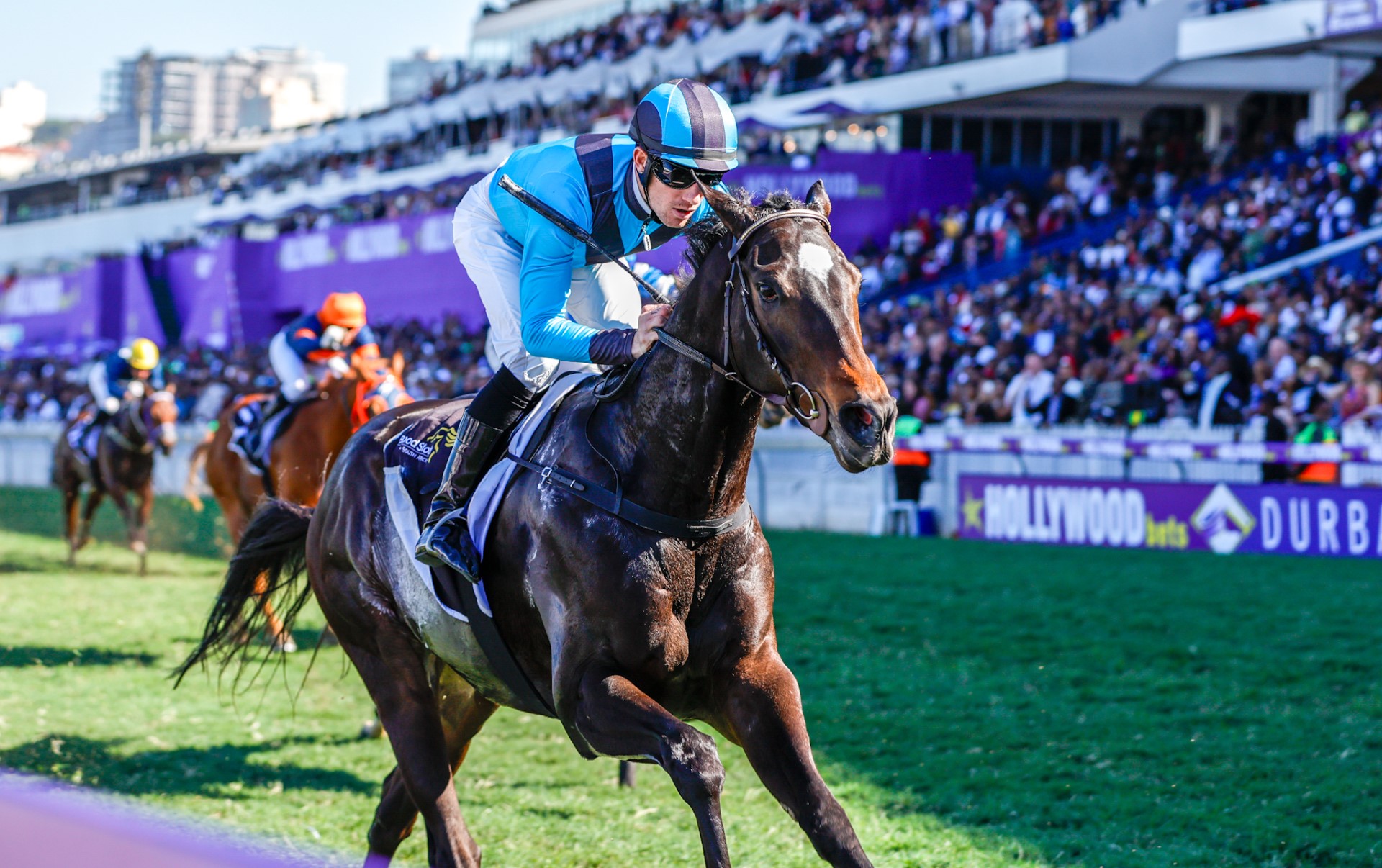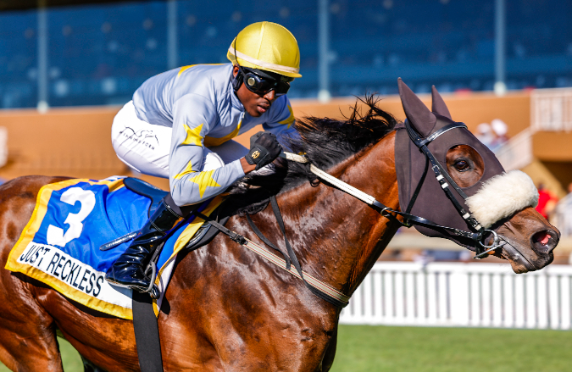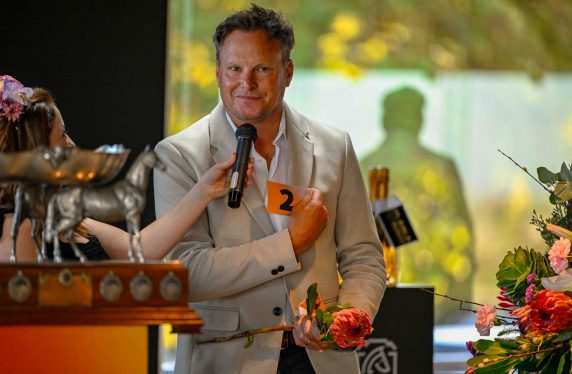Racing in Hong Kong is unique. There is no breeding industry, all horses are imported, and most of them race as geldings. The betting turnover is enormous and the attention to customer needs is matched only by the Hong Kong Jockey Club’s focus on integrity.
William A. Nader oversees the racing division of the Hong Kong Jockey Club, an incredibly successful non-profit association that offers 83 days of live racing annually at Sha Tin and Happy Valley Racecourses—the latter a spectacular facility in the midst of the city’s bustling skyscraper district.
Before coming to Hong Kong four years ago as the Club’s executive director of racing, Bill Nader spent 14 years with the New York Racing Association, first as director of simulcasting, and later senior vice president and chief operating officer. He worked at Rockingham Park in New Hampshire before that.
Hong Kong also puts on one of the world’s largest international race meetings each December, and it is in that capacity that Nader’s name has been discussed as a potential candidate to replace Greg Avioli as president and CEO of the Breeders’ Cup.
When did you come to Hong Kong, and why did you decide to go to work for the Hong Kong Jockey Club?
I arrived on the evening of April 22, 2007, and started work the next morning. My only prior visit to Hong Kong was for the international races in December of 2000 and it was a memorable experience. From every possible viewpoint — the professionalism, attention to detail, quality, enthusiasm and excellent customer service — made a huge impression. When the head-hunting agency employed by the Club contacted me about the position, I thought I was a low-percentage candidate. The new CEO, Winfried Engelbrecht-Bresges, was the prior executive director of racing and we had never met. But he had done his homework and we hit it off when we spoke. I had no intentions of leaving NYRA but this opportunity came together very quickly. It was exciting for me to take that next big step and broaden my racing education and I needed that. Fourteen years at NYRA was a great run, but toward the end it was an absolute battlefield. Making the move to Hong Kong helped to renew my love for the sport.
What surprised you the most about racing in Hong Kong, either on the business side, the sport, or operations? What was something you didn’t know that you found interesting?
When I first started, Winfried told me it would take one year to figure it out. I was a bit insulted by that remark, but he wasn’t far off the mark. This is a huge operation and my job portfolio covers racing operations, stipendiary stewards, the lab, veterinary services, handicapping and race planning, international races and our horse sale, sponsorship, simulcasting, equestrian, the apprentice jockeys’ school, racing registry and many management meetings and working groups that require cross-functional support. Fortunately, we have a great team of dedicated top-level people to lend their expertise and help drive our success.
There are no claiming or allowance races. We use the European system of rating bands for Class races and, with the exception of nine international races each year, our program is restricted to horses stabled in Hong Kong. To own a horse, you must be a member of the Jockey Club and any single member is limited to four horses at any one time. We receive approximately 1,000 applications from members for approximately 340 permits to import a horse each year, so it is great status to own a horse here. A trainer has no payroll and does not invoice his owners, as the staff is employed by the Club and medications, feed and bedding, etc., all go through us. There are no extra or substitute races, the races that are programmed are the ones that we run with no exception. A certain race might be amended, but it would be announced three weeks in advance. We cannot race on a Friday night at Happy Valley because the popularity of racing would lead to traffic problems and the police will not approve such a fixture.
Earlier this season, we had 19 of the world’s top 100 horses in the World Thoroughbred Rankings, which is amazing given our small population. There are only three fillies and about 98 percent of our horses are geldings, so our fans get quite familiar with our stars. I could go on and on, it is really a fascinating place for racing.
From your experience with American tracks (Rockingham Park and NYRA) and now the HKJC, how would you characterize any difference in philosophies that drive each country’s racing industries?
Rockingham Park was a mid-sized track that played big at times. Great horses like Dr. Fager and Roman Brother won the New Hampshire Sweepstakes back in the ‘60s and it had a one-year stint in the American Championship Racing Series (Marquetry). But for the most part during my time, it was in survival mode with modest racing, limited resources and the occasional big event.
During my NYRA years, it is fair to say that I was there through some turbulent times and many different administrations. Philosophies shifted because of battles with OTB, the state, VLTs, the politics around the franchise; it became increasingly frustrating. Prior to that, the focus was on NYRA – the industry leader in producing quality racing. We leveraged on the strength of our year-round racing, graded stakes program and built a strong simulcast network. We tried to keep the takeout low…we were doing some good things.
With the HKJC, there seems to be a great deal of emphasis on transparency and on protecting the integrity of the game. Did this evolve over time, was there a scandal that heightened awareness, or has it always been the HKJC’s policy to really focus on these areas?
Hong Kong people have a propensity to gamble. This is a small place where 7 million people live and yet we average US$124 million in wagering per race day. With that kind of volume, Illegal operators were once a big part of the landscape and the cry for integrity was loud, clear and necessary. The combination of high integrity and great transparency was a requirement to ensure that the playing field was fair. The wagering here is the highest in the world on a per-race basis and we must take every measure possible to protect and sustain that position.
As I’m sure you know, there is a movement afoot to abolish all raceday medication in the U.S., including Lasix. Vets and horsemen will likely object. How does Hong Kong deal with bleeders?
Horses that bleed are barred from racing for three months. During the first month, the horse is not permitted to use the swimming pool or train on the dirt or grass tracks. During the second and third month of the ban, the horse is permitted to use all training facilities. The same holds true if a horse bleeds for a second time. If a horse bleeds for a third time, it is permanently banned from any further racing in Hong Kong. A bleeding incident is defined as a horse which bleeds from the nostrils.
It is not uncommon for a horse to race here within one or two weeks of its prior race and there are multiple occasions when a horse will have two races within either four or five days. The horse population here is about 1,200 and average field size is 12.5 for our 767 races.
Does the HKJC follow a zero tolerance policy on therapeutic medications, or does it permit threshold levels for certain drugs?
There are internal screening action levels for therapeutic medications that are set by historical precedents and estimations of lack of pharmacological effect. On race day, no medication is permitted.
What competition does the HKJC face in the wagering business?
We hold the license for horse race betting, soccer betting and the lottery. In Hong Kong dollars, horse racing is $80 billion, soccer is $40 billion and the lottery is less than $7 billion. The competition is a one-hour ferry ride to Macau where casino gaming now exceeds Las Vegas. There is no horse breeding in Hong Kong. About 70 percent of our horses are imported from Australia and New Zealand with Europe and America making up most of the balance. Unfavorable currency rates and higher prices for good horses is another threat as our owners source horses to maintain Hong Kong’s high standard of racing.
Hong Kong is vertically aligned, which is ideal. We are in control of our intellectual property rights, broadcast rights, regulation and tote. We are the biggest single taxpayer in Hong Kong at nearly US$2 billion per year and are trying, somewhat unsuccessfully, to lower the betting duty on horse racing, which is a staggering 72.5% of the gross margin. The focus here is on the customer experience and understanding the value proposition for horse owners, high value customers and segments that can be developed and produce lifetime value. There is also a strong focus on the food and beverage offering, upgrading the racecourses, building a horse training center in China – but the priorities are clearly in order
How has racing reacted to that competition?
We break down our customers into specific segments and try to improve the overall experience with priority on those that bring greater value or those with the greater upside or lifetime value. We then invest accordingly. Fortunately, our existing customers are extremely loyal and our racing brand packs a powerful punch. The tougher test will come with the next generation, especially with the imposing presence of neighboring Macau.
You’ve experimented with rebates on losing bets by big bettors. What’s been the experience with that? Has it paid for itself through increased wagering?
We offer a 10 percent rebate in Win, Place, Quinella and Quinella Place pools for losing bets valued at HK$10,000 or more. This is our only form of rebate. Quinella and Quinella Place account for 49% of all wagering in Hong Kong, the latter is selecting two horses that finish among the top three. It has been successful in channeling money back from the illegal operators. Win and Place wagering accounts for 34% of all wagering in Hong Kong, so the betting here is more conservative – more like the UK. Wagering has increased approximately 33 percent over the past five years. This season’s numbers will be: 83 race days, 767 races, $US10.3 billion in turnover.
If I’m not mistaken, Hong Kong permits a limited number of imported simulcasts per year. Is there much interest from your players in races like the Breeders’ Cup and other imported races?
We were limited to 10 races a year and those simulcasts were required to occur on a local race day. We have since added 15 simulcast days, limited to four hours each, which must occur on non-local race days. The Breeders’ Cup is one of our 15 days and is important because a number of horses will then come on to the Hong Kong International Races in December. Turnover is relatively low because of time of day, but we choose to focus on the world’s great racing occasions and this one makes good sense from a positioning standpoint.
Speaking of the Breeders’ Cup, your name has been floated as a candidate for the open CEO position. Would you have any interest in that job?
It is nice that many believe I would make a worthy candidate for such a great position, but I can assure you that no discussions have taken place
(To learn more about the HKJC, visit its website here.)









